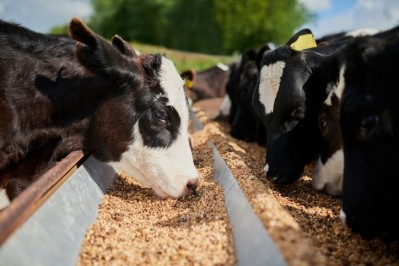AB Vista: 1+1=1.6 when combining poultry feed enzymes

“The long and the short of it is that if you get 100 calories from either a non-starch polysaccharide (NSP) degrading enzyme or a phytase, this doesn’t mean that you will get 200 calories by combining the two. One plus one isn’t two in the bird; it is approximately 1.6 because you don’t get the full additive value; the scale of response is reduced,” Dr Mike Bedford, AB Vista’s research director, told FeedNavigator.
Complex interactions compounded
He said this ‘sub-additivity’ was due to complex interactions taking place between enzymes, their respective target substrates and the gut environment - and that these interactions become even more complex when using two or more different classes of enzymes in combination.
Only by understanding how these interactions affect performance can the industry optimize the efficacy of feed enzymes to maximize return on investment, he said.
Feed enzymes are added to diets to increase the digestibility of the undigested fraction - giving animal producers more ‘bang for their buck’ by extracting more nutritional value from feed.
Challenging the status quo
Ten years ago enzyme additions were generally assumed to be ‘additive’, in other words, that the amount used was directly proportionate to the nutritional response. However, as Bedford explained, recent research has shown that it is wrong to assume that inclusion of two enzymes will double digestibility.
“In the undigested fraction there will be parts that are easy, moderate and difficult to digest. Some of the more difficult to digest parts of the undigested fraction will never be digested, no matter how many enzymes you add. The first enzyme might break down 25% of the undigested fraction. A second enzyme won’t be as effective as this easily-digested fraction has already been degraded.”
Bedford said this has implications for the way in which enzymes are formulated into feeds, highlighting a need for more caution to be exercised when combining enzymes if performance is to be maximized.
One particular point of concern relates to energy recovery in broiler starter rations. When enzymes are added to feed, the energy matrix associated with the enzyme results in some fat being taken out of the ration. However, Bedford warned that over-estimating the energy value generated by an enzyme combination could leave the diet lacking in fat, resulting in a drop in expected bird performance.
Precise dosing critical for young birds
He said this was advice was particularly applicable to young birds, for whom sufficient fat was critical for growth.
“With young animals it is vital not to go too far with the removal of fat. There is a threshold and once you dip below that, you get a loss in performance that is far costlier than the saving made by removing that amount of fat.”
He also warned that relying on research literature to predict energy response could be misleading, as, although phytase features in most pig and poultry diets, this is rarely reflected in NSP enzyme studies.
"Literature is dominated by reviews of NSP degrading enzymes without any phytase in the background diet - out of 2163 papers in the review of Rosen in 2004 on NSPs, only 11 have included a phytase in the diet. Yet in real life most commercial producers include phytase in feeds, so they won’t get as big an energy response as they might expect from the literature.”
Beyond enzymes
The question of additivity is not just relevant for enzymes, but also potentially important for other feed additives. Bedford has a hunch that probiotics, emulsifiers and other additives could be equally sub-additive with each other and with enzymes, although this hasn’t yet been proven.
“There are a lot of companies who are putting energy values on products, including enzymes, in isolation. My suspicion is that these components are not all additive and that feed producers need to consider this and be more cautious,” he said.








